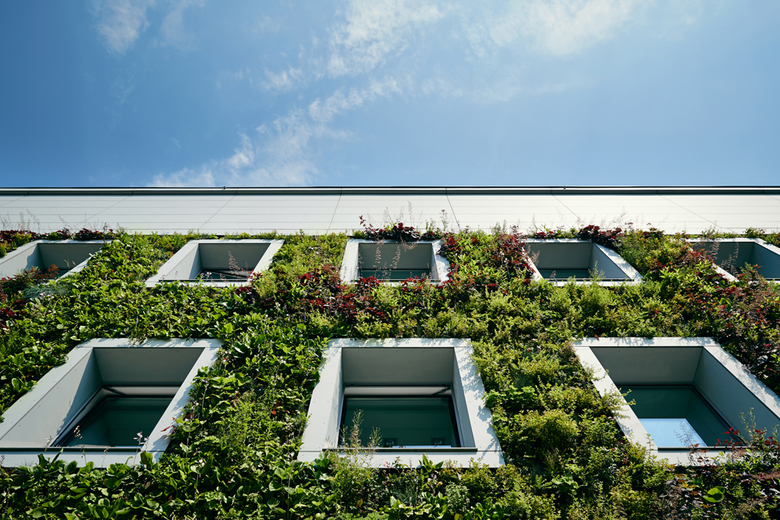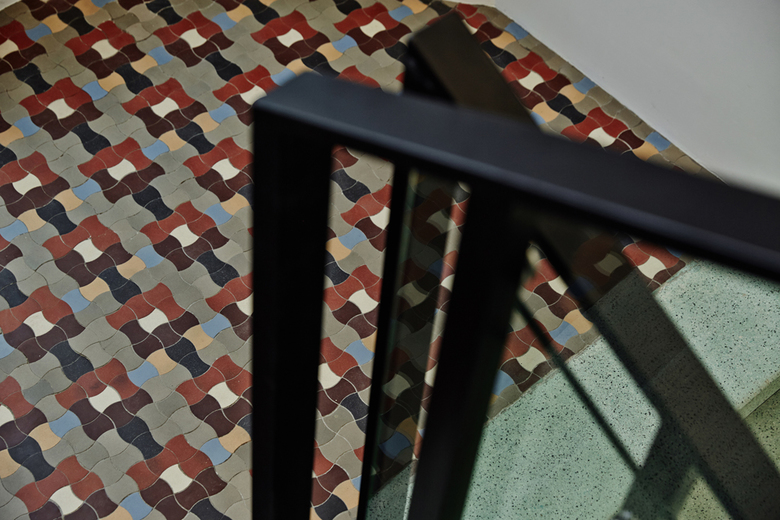The project intent was to preserve the character of the 1933 dilapidated multi-family house, which had been seriously mutilated by air bombing during WWII, while converting it into an environmentally friendly and modern office space.
Simultaneously, precious architectural and historically significant elements were safeguarded alongside adhering to the restrains postulated by the Warsaw Preservation Office in regards to building mass and window layout.
The building’s location, inside a sparse subdivision, established in 1930’s, influenced the multilayered integration of the project within the green context and public space. The investment strove to reduce its impact on the municipal infrastructure and the natural environment.
Removing the front yard fence helped to enlarge the public space of the street and incorporate the backyard garden with it. The addition of an internal atrium and perforation through the ground level, beginning with the main entrance, established a visual link between the outside and inside, between the street and the garden.
The integrating tool to connect the building to its green context is the successful application of the first in the region external vertical garden onto both front and side elevations. The rain water collected into the retention basin irrigates the vertical garden and eliminates the demand for the municipal network. An 82% of the relatively small town plot, taking into account the vertical garden, is covered with surfaces allowing natural water retention.
Access to natural light was given to 96% of the above ground level space. The ground level and underground parking lot (overhead skylights), reached the highest possible ratio; 100% of those spaces have access to the natural light.
Preserving the original internal staircase, including the green terrazzo steps and landings filled with tiny, colorful “corset” ceramic tiles (nearing extinction) recalls the atmosphere of similar buildings of the era located in Europe.
Foundation for Polish Science
Torna alla Lista di Progetti- Sede
- Krasickiego 20/22, 02611 Warsaw, Poland
- Anno
- 2014









